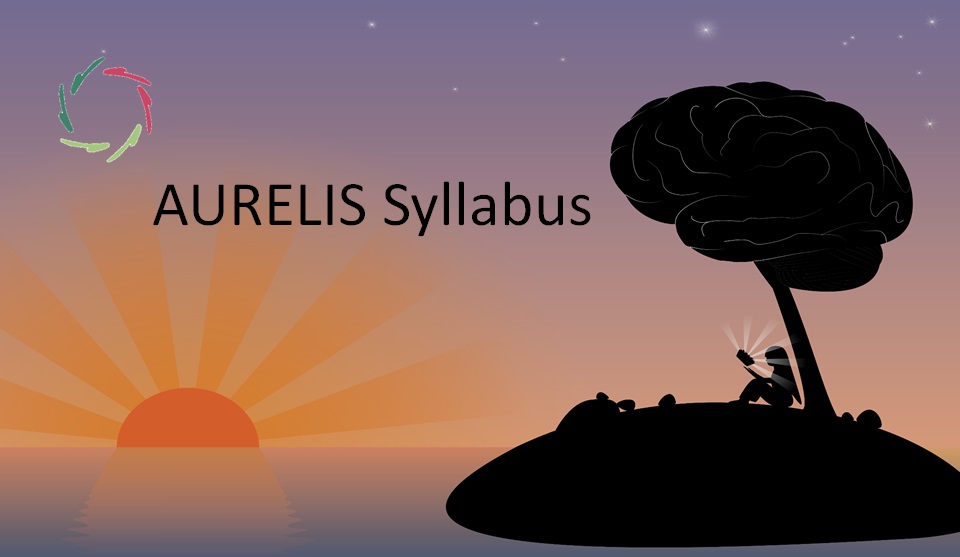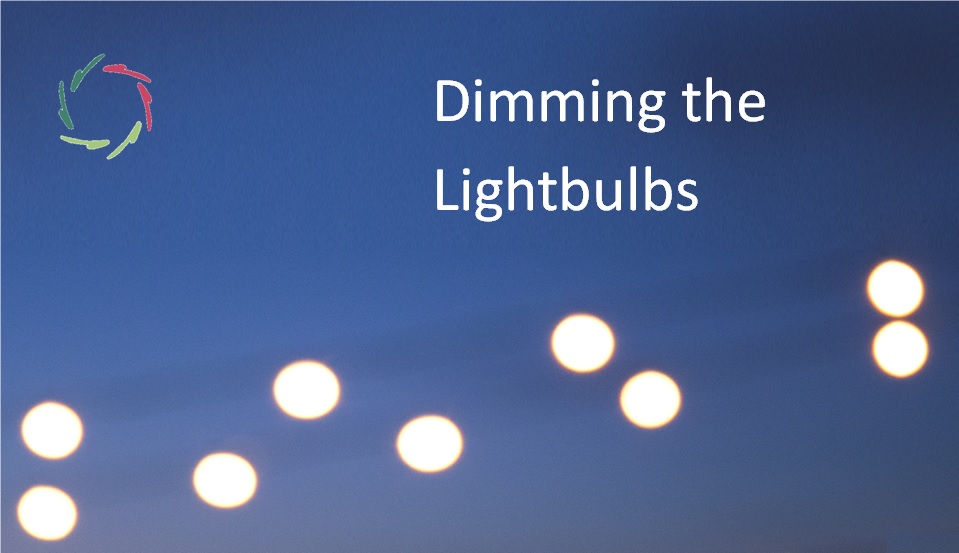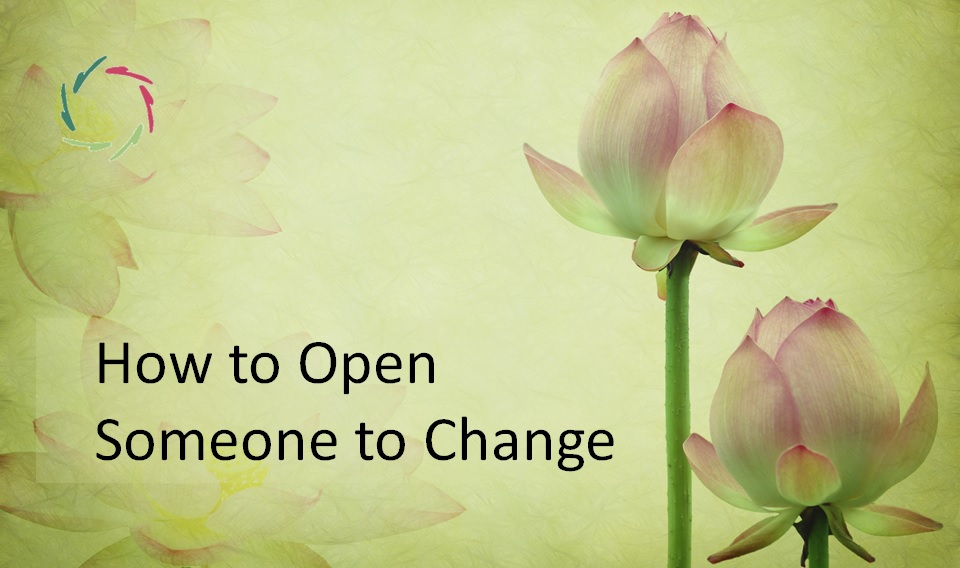AURELIS Syllabus

This category contains blog texts that form one part of the AURELIS course towards becoming an AURELIS coach. You find all of them also under other categories. This is necessary background information. Please read (some of) them if you are interested in becoming an AURELIS coach. There will be more in due time. A certified Read the full article…
Why AURELIS is no Therapy

The difference is fundamental in aim and means. What is ‘therapy’? An ill person goes to someone in search of a cure. What he wants is good therapy that brings him back to the state without illness. Therapy is what accomplishes this feat. AURELIS? AURELIS does not bring the ill person back to the state Read the full article…

Nobody Wins In Argumentation
So make sure you have a common goal with the necessary depth. In deep dialogue, everyone wins. In this case, the most important thing is to have a common goal. So make sure you have a common goal. A goal is like a mountain. When the other person is on another mountain, and you pull him off Read the full article…

What is ‘Depth’?
An AURELIS coach always reaches for depth in his coaching. There is an ongoing commitment to depth. Superficial – deep We talk about ‘superficial’ versus ‘deep’ attention, or ‘superficial’ versus ‘deep’ meaning, or ‘superficial’ versus ‘deep’ emotions. And of course: in the syllabus, you continually encounter the term ‘the deeper self.’ So what is depth? That Read the full article…

No Power without Compassion
As an AURELIS coach, you may be of profound significance in the lives of others. The others may be very grateful to you for this and that is, of course, the most fun part of the job. The pleasure is not to be despised, and it is also important to you and the coachees who Read the full article…

Compassion and Equanimity
Compassion and equanimity: two complex concepts that belong together in-depth. Compassion is a kind of positive empathy. Not: getting carried away in other people’s feelings, but: having and showing attention for them => feeling those feelings like the waves on a deep ocean and then inviting the others to go deeper with you. Emotions are Read the full article…

Don’t Try ‘Here’ to be ‘There.’
Breaking out of mere-ego without leaving mere-ego… Oh, dear. The flower bud that absolutely wants to be an open flower, but cannot let go of the top of the flower bud. Oh, dear. This tension can grow very high. ‘h3ere’ trying to be ‘there,’ and at the same time trying to take ‘here’ with you, Read the full article…

AURELIS and Friendliness
AURELIS seems like a very friendly way to treat yourself and others… and rest assured, it is. But: not simply. ‘Friendly’ does not mean that you satisfy others in the most convenient way no matter what. That would be kind to the ego, but not to the deeper self. And that is precisely the opposite of Read the full article…

Speak to Ego and You Form Ego
Ego is locked in itself, in the ‘prison’ that it is itself. It seems like you need to free something from itself, but you can’t. Address total self, and you’ll form total self. It can be very annoying if you want to speak/act/be from your total self and people talk to you repeatedly as if Read the full article…

Problem -> Goal -> Cause -> Being There
Not all simple things are interesting, but all interesting things are easy to express in words. Such as: • What’s the problem? -> What’s the goal? • What is the deeper purpose? • What is the cause of this deeper purpose? Why do you want that? • Be there. In the case of superficial goals, it is not so interesting to Read the full article…

Lightbulbs and Human Energy
Please read first [see: “Dimming the Lightbulbs“] You can also view the image of the lightbulbs from a different angle. That is: the underlying glow of the lights is ‘human energy,’ or motivation, deeper and deeper as you enter a more meaningful and vague domain Where does the ‘glow’ ultimately come from? You may say: Read the full article…

Dimming the Lightbulbs
Imagine a large number of tiny lights as a kind of lightbulbs scattered in a room. These lights represent the purely conceptual thoughts in a person’s mental landscape. This is conceptual thinking that also thinks about itself in a similarly conceptual way. In other words, this is ego-minded consciousness. Also, imagine gleams behind the bulbs (or Read the full article…

About ‘Now’ during an AURELIS Session
This is important each time someone uses an AURELIS session. At the same time, it’s something for the ‘advanced’ user. For one person, it is easy to swoop in; for the other, it is a job of thinking, feeling, perceiving for a while. Of course, you can do AURELIS sessions with a specific purpose in mind. Read the full article…

Mindfulness, Lights and Glow
One can understand ‘mindfulness’ in two different ways, which are distinguishable from each other in the metaphor of the ‘lights’ and the ‘behind the glow.’ These two ways are even opposed at this critical point, although they are two poles that also flow into each other. • mindfulness with primary attention to the lights The underlying Read the full article…

AURELIS & Expansion of Consciousness
The term ‘consciousness expansion’ is peculiar in many ways. How can consciousness be expanded? What does this ‘broad-minded’ mean? Is this mainly a feeling, or is it much more than that? [see: “Expansion of Consciousness“] AURELIS skill Expanding consciousness in all openness, kindness, and compassion, soft, firm, and realistic, in full acceptance of who you are and who Read the full article…

AURELIS = YOU as a Total Person
Suppose someone comes to you, and it turns out that he has not heard or thought much about the ‘non-conscious’. Then it is important to outline this as part of the ‘environment within which AURELIS works.’ The following is an example of a text as understandable as possible, just straightforward, that could be used in this Read the full article…

Coaching Note on Communication
To communicate = everything at once. Any division is artificial. Give people what they really want in your communications. In other words, try to get the colorit and respond to that, instead of responding to what you think the person might feel or might need on the surface. In the human painting, the colorit is Read the full article…

Somatisation and De-Somatisation
The movement from that which shows itself somatically to the same that now shows itself mentally. People can ‘feel with their bodies’ = somatization. This also means that if (physical) symptoms are loosened, people may become aware of feelings more psychologically. This gives the impression that these feelings are appearing only now, but they were Read the full article…

Banned from the ‘Garden of Eden’
EVERY feeling of ‘being sinful’ is the translation of a feeling of not opening. See the flower bud metaphor in e-booklet 2. Inner Dissociation The Biblical original sin lies in ‘eating the apple,’ this is: reaching a state of self-consciousness and therefore also seeing oneself, one’s nakedness. But at the same time, it also lies Read the full article…

Good Communication is a Spontaneous Reaction
Spontaneous: not superficial but from the inside out. Two facts: • The non-conscious is always present and plays a significant role in whatever you do, also in the contact between a coach and a coachee. • The non-conscious reacts much faster than the conscious mind. The latter has been well investigated in the following experiment: A green Read the full article…

Emotions and Consciousness
An emotion is, of course, always important. Yet, there is a whole gradation between ‘superficial’ and ‘deep.’ Deep as being what has more to do with more of you. But what this actually means is quite subtle. [see: “What is ‘Depth’?”] You can be aware of an emotion, but you cannot evoke an emotion with your consciousness alone. Read the full article…

Detachment
A major misunderstanding that must be put to bed in the (Western) world: ‘detachment’ is NOT the having of control over one’s feelings and emotions, nor is it the loss or not having of feelings and emotions. “The detachment of a stone is not that of a human.” Having the ability to show some detachment Read the full article…

Watzlawick’s Axioms of Communication
… in relation to AURELIS. Paul Watzlawick (1921 – 2007) has been one of the best-known thinkers about communication. His central tenet was that a lot of communication is carried on below the level of consciousness. It happens automatically. I put his five ‘axioms of communication’ in a table and comment on them from an Read the full article…

Goal of Lisa Coaching
Every Lisa coaching session – as well as string of sessions – is part of a path towards healing from the inside. From goal to broader The goal of Lisa coaching [see: “Lisa“] starts at the beginning. This is, validating the outspoken goal of the user. Then, with user consent, going somewhat deeper into this Read the full article…

Wounded Healing
Having been wounded helps an (AURELIS) coach in-depth to get nearer to coachees ― especially if one has learned/grown from such experiences. The wounded healer This is a healer/coach who can understand another wounded person, not just intellectually, but even more experientially and profoundly. This may frequently be more important than capturing the whole factual Read the full article…

‘To Believe’ within Coaching
A coach’s genuine belief in the coachee enables the coachee’s positive change. This kind of belief is a deep two-way communication. This may be one of the most challenging things for any human being. If it looks simple, the road is longer. Genuine belief, from the inside out This is like a leader’s deeply felt Read the full article…

How to Turn a Square into a Circle
‘Turning a square into a circle’ is a metaphor for psycho-therapy. There are two opposite directions: from the inside out and from the outside in. Preliminary In this text, I denote with the term ‘psycho-therapy’ the domain of psychotherapy and mind-related coaching in a broad sense. This text describes a conceptual landscape. Any practitioner, any Read the full article…

Is a Good Coach Makeable?
In a broad sense, much in the world hangs on this. The answer depends on a profound view upon the human being. What is a good coach? Straightforwardly, a good coach is a successful coach. But what is success in coaching/therapy? This question may be answered in several ways. [see: “What is Success in Therapy?“] Read the full article…

Being Critical is Not Being Closed
I’m rarely on it like this, but I think this piece is really of the utmost importance for an AURELIS coach. With this, it stands or falls. It is therefore advisable to read this text very carefully several times. It is not devoid of subtlety. Try your best not to misunderstand. Talk about it openly. Read the full article…

G.I.M.O.
Each formal human- or Lisa-coaching (or job interview) ends with a G.I.M.O.: Goals – Insights – Motivations – Obstructions. A G.I.M.O. is succinct and set up within the dialogue between the coach or Lisa and the user. It serves as a focus to work towards a take-home for the user (as homework) a pick-up at Read the full article…

Compassionate Goal of Coaching
This goes further than usual. Compassion takes into account the total person and leads to Inner Strength. More than symptomatic This means that people need some proper insight early on. To some, this may be a hurdle even to consider it as a worthy goal. The West, at least, has become a symptomatic society. For Read the full article…

The Coach’s Charisma
Crucial is where it comes from: the outside or the inside. I see in the latter the Compassion-factor. Compassion [see: “Two-Sided Compassion”] Compassionate healing comes from the inside out. This ‘inside’ doesn’t just mean ‘inside the mind.’ It goes deeper within the mind itself in accordance with subconceptual processing, getting to inside mental-neuronal patterns. [see: Read the full article…

Sacred Space of Coaching
This is about deep meaningfulness. No magic required. In sacred space, things can happen from the inside out. This is the best way in many mind-related issues. We should stay scientific. If we don’t incorporate things like ‘sacred space’ into science, we leave it to nonscience. It may then still make sense in a non-scientific Read the full article…

Towards AURELIS Coaching
This is a direction, not an end-point, nor any point somewhere nearby. It is a road to be traveled on while enjoying the landscape. No therapy In AURELIS, there is no attacking of any disease, nor symptom, be it mental or physical. The AURELIS aim is, where appropriate, to go deeper than the outer symptom Read the full article…

AURELIS-Coaching: Coach = Coachee
This is about almost becoming another human being without losing oneself. It is very normal. It is very special, indeed. ►►►WHY read this? The professional coach-coachee relationship will become one of the most interesting.◄◄◄ This is pretty much central to AURELIS-coaching. The identity function (‘=’) is more than about a relationship on equal footing. The Read the full article…

Deep Listening
is probably the hardest thing to do. It’s also very important. People continuously use terms of which they think others surely know what is meant, as if these terms are exact pointers to abstract, ‘Platonian’ concepts. However: look at the brain and you notice that concepts-as-used-by-humans can never be ‘Platonian’ even if one can delineate Read the full article…

How to Open Someone to Change
Trying to ‘open’ someone to a change of view or behavior, is a common situation. It’s that of a coach with a coachee, or of you perhaps, wanting to ‘open’ someone to another view. People have a natural resistance to be changed. Quite rightly so. There is a natural tendency towards survival as an individual. Read the full article…